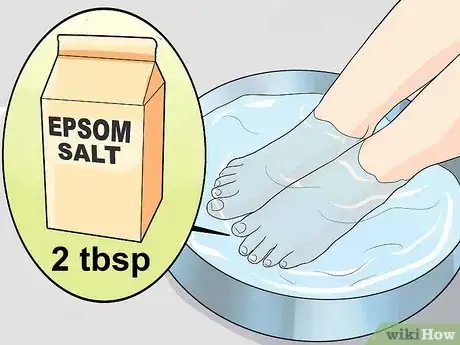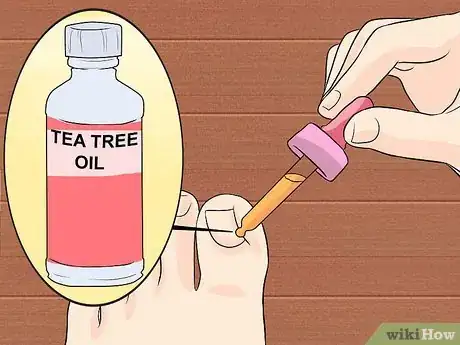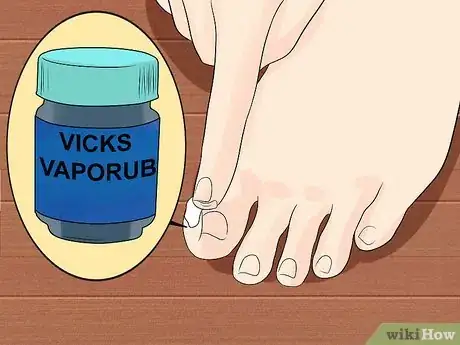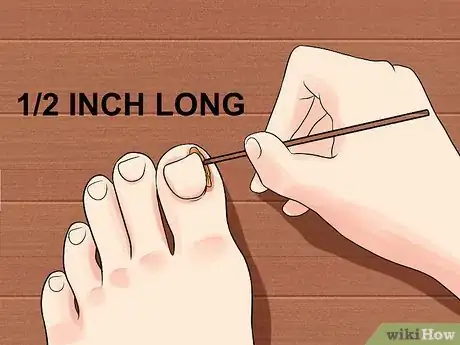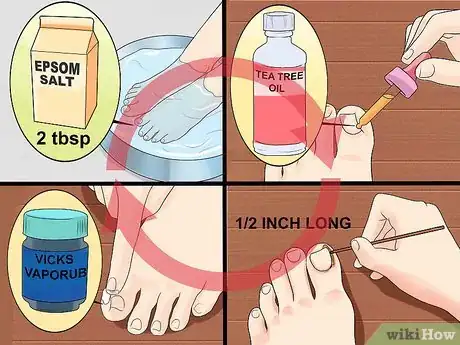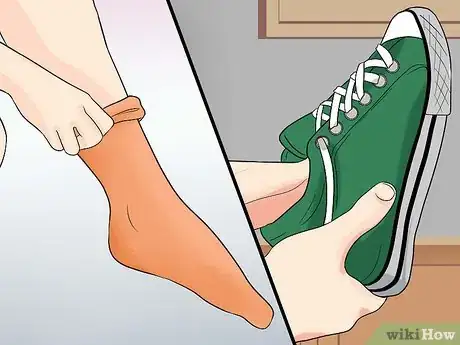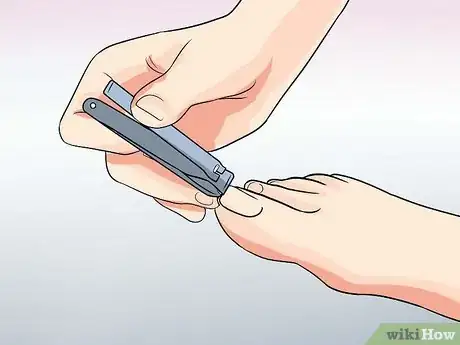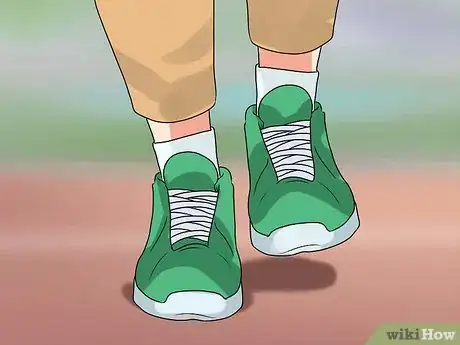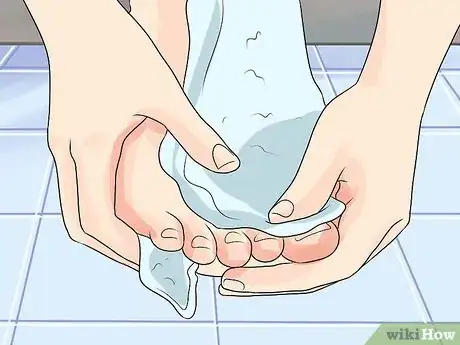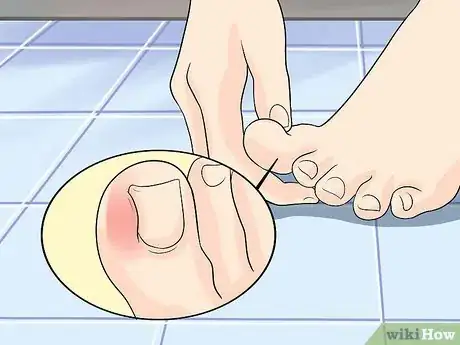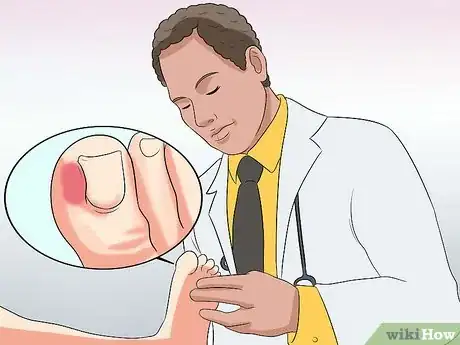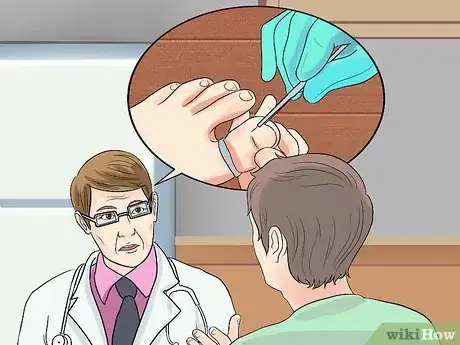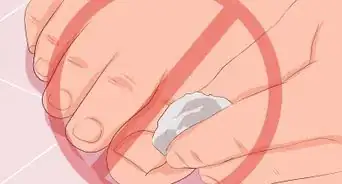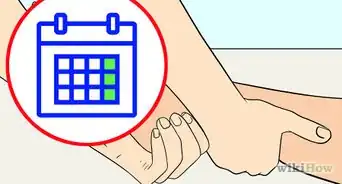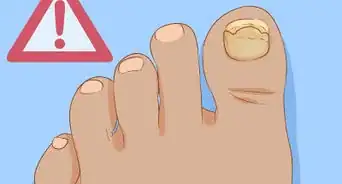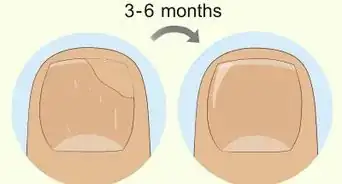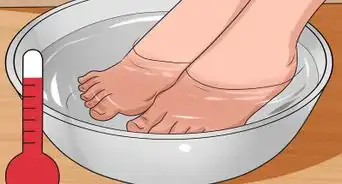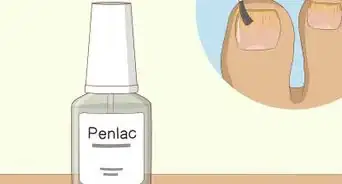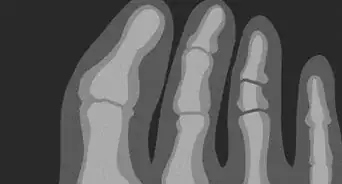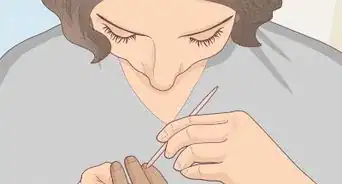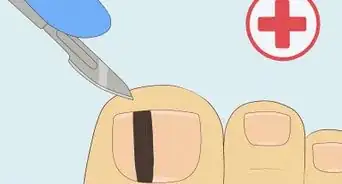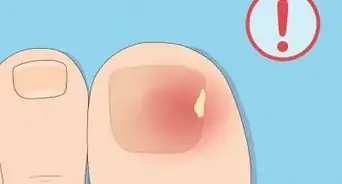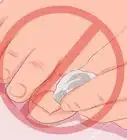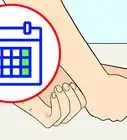This article was medically reviewed by Troy A. Miles, MD. Dr. Miles is an Orthopedic Surgeon specializing in Adult Joint Reconstruction in California. He received his MD from the Albert Einstein College of Medicine in 2010, followed by a residency at the Oregon Health & Science University and fellowship at the University of California, Davis. He is a Diplomat of the American Board of Orthopaedic Surgery and is a member of the American Association of Hip and Knee Surgeons, American Orthopaedic Association, American Association of Orthopaedic Surgery, and the North Pacific Orthopaedic Society.
This article has been viewed 73,207 times.
Ingrown toenails are painful and may even require surgical removal if they become severe. But if you catch an ingrown nail early enough, then you may be able to heal it. This process requires you to be able to reach your feet, so ask for help if you cannot do it yourself. If your nail looks like it is infected (red, warm, swollen, and/or draining pus), then see your doctor as soon as possible.
Steps
Lifting the Ingrown Nail
-
1Soak your feet. To keep your feet clean and make the nail pliable, you will need to soak your affected foot in warm water.[1] You may want to soak both feet to make this process a bit more relaxing. Soak your feet four to five times per day for 10 to 15 minutes each time.
- You can add two tablespoons of Epsom salts to the foot bath or just use plain water.
-
2Put a drop or two of tea tree oil on the nail. Tea tree oil may help to fight off infections.[2] After each time that you soak your feet, put a drop or two of tea tree oil on the affected nail. The tea tree oil may help to prevent infection and keep the nail a bit softer.Advertisement
-
3Apply Vicks VapoRub to ease pain. After the tea tree oil soaks in, you can also put a dab of Vicks VapoRub to the sore area of your nail. The menthol and camphor may help to reduce the pain and will also keep your nail soft for the next part of the treatment.[3]
- Keep the menthol/camphor on for 12 to 24 hours using a bandage or a small piece of gauze.
-
4Use cotton to lift the toenail. The following day soak your feet for about 20 minutes. Then, take a small piece of cotton (gauze or cotton ball) and roll it between your fingers so that it forms a cotton “tube” that is about ½ inch long. Tape one end of the cotton tube to the top of your toe. Then, gently lift the corner of the ingrown nail up a little bit with one hand. With the other hand, work the free end of the cotton tube under the corner of the nail and out the other side so that the cotton is between the skin and the nail.[4]
- This might be a little painful or strange at first, but it is necessary to lift the nail away from the skin to prevent it from growing deeper into the skin.
-
5Repeat this process for up to two weeks. Keep the cotton in place and replace it every day after soaking your foot. You will need to repeat this process for two weeks or until the toenail grows out a bit, but you should notice some improvement after a few days. If you do not notice any improvement, then call your doctor.[5]
Promoting Healing
-
1Wear shoes and socks that fit well. Wearing tight shoes and/or socks is a common cause of ingrown toenails.[6] If your shoes are too narrow, try to find some wide shoes in your size or opt for open-toed shoes when possible.
- High-heeled shoes may also cause ingrown toenails, so wear flats or low-heeled shoes as much as possible.
- Stick to plain white, cotton socks. Dyes from the fabric of colored socks may irritate an ingrown nail.
- If you can go without socks and wear sandals instead, then that may help your ingrown nail to heal even faster.
-
2Cut your toenails straight across the top. Cutting your toenails in a curved fashion may increase your chances of developing an ingrown toenail.[7] To eliminate this risk factor, cut your toenails in a straight line and do not cut them too short.
-
3Protect your feet during sports or activities that may injure your toes. Repeated stubbing your toe or kicking a ball can lead to ingrown toenails as well.[8] If you think that your ingrown toenails may be due to participation in sports or frequently stubbing your toes, then try getting some protective footwear.
- Reinforced or steel toe shoes may help to protect your toes from injury.
-
4Keep your feet clean and dry. Keeping your feet clean and dry may not prevent an ingrown toenail, but checking your feet often and taking good care of them may help you to detect ingrown toenails before they get out of control. Wash your feet daily and put on a new pair of clean dry socks every day.
- Check your feet if you notice any pain or redness in your toes. If you notice that one of your toenails seems to be growing inwards, then take steps to prevent it from progressing.
- If you have diabetes, then you need to check your feet every day. If you cannot do it yourself, the you will need to ask someone to do it for you.
Getting Medical Help
-
1Check for signs of infection. An infected ingrown toenail will require medical treatment or the infection may spread to the bone. Signs that an ingrown toenail might be infected include:
- redness
- swelling
- warmth
- pus
-
2See a podiatrist regularly if you have a condition that limits your circulation. If you have diabetes or any condition where circulation is limited in your feet (such as peripheral artery disease), then you will need to see a podiatrist for regular check-ups. Seeing a podiatrist can reduce your chances of needing a foot or limb amputation by as much as 85%.
- If you notice that you have an ingrown toenail or if your toenail has become infected, then call a podiatrist to make an appointment for as soon as possible.
-
3Consider surgical removal. If you often get ingrown nails, then surgical removal of all or part of the nail may be the best option. Your podiatrist can perform this procedure using local anesthesia, so you will not feel anything. If the problem keeps recurring, then it may be necessary to remove an entire section of the nail root to prevent future ingrown nails.[9]
Warnings
- DO NOT try to cut or remove an ingrown nail by using nail files, tweezers, or any other implements. These tools are likely to break or damage the skin, which may lead to an infection.⧼thumbs_response⧽
References
- ↑ http://www.webmd.com/skin-problems-and-treatments/tc/ingrown-toenail-topic-overview
- ↑ http://www.webmd.com/vitamins-and-supplements/lifestyle-guide-11/supplement-guide-tea-tree-oil
- ↑ http://www.drugs.com/mtm/vaporub.html
- ↑ http://www.webmd.com/skin-problems-and-treatments/tc/ingrown-toenail-topic-overview
- ↑ http://www.emedicinehealth.com/ingrown_toenails/page6_em.htm
- ↑ https://www.mayoclinic.org/diseases-conditions/ingrown-toenails/symptoms-causes/syc-20355903
- ↑ https://www.mayoclinic.org/diseases-conditions/ingrown-toenails/symptoms-causes/syc-20355903
- ↑ https://www.mayoclinic.org/diseases-conditions/ingrown-toenails/symptoms-causes/syc-20355903
- ↑ http://www.mayoclinic.org/diseases-conditions/ingrown-toenails/basics/treatment/con-20019655
About This Article
If you have an ingrown toenail, soak your foot for 10-15 minutes in warm water, up to 4 or 5 times a day. Dry off your foot and apply 1-2 drops of tea tree oil to the nail. Once the tea tree oil has soaked in, you can apply a dab of a mentholated rub like VapoRub to the area to help ease any pain. The next day, soak your foot again, then gently lift up the toenail and place rolled-up cotton beneath it to lift the nail. Repeat the process for up to 2 weeks, replacing the cotton each day. Keep reading for tips from our Orthopedic co-author on how to cut your nail to help it heal!
